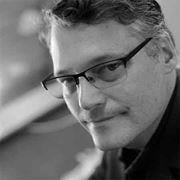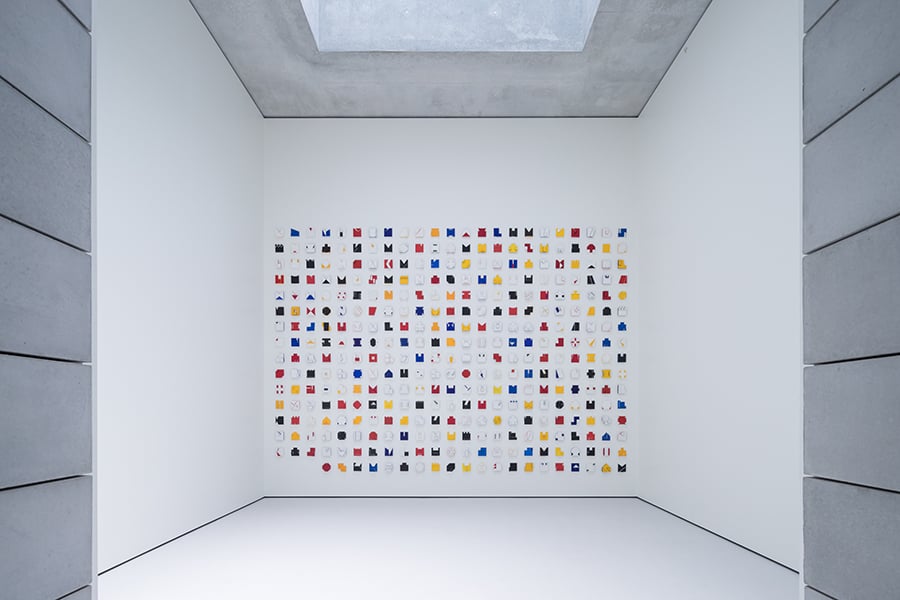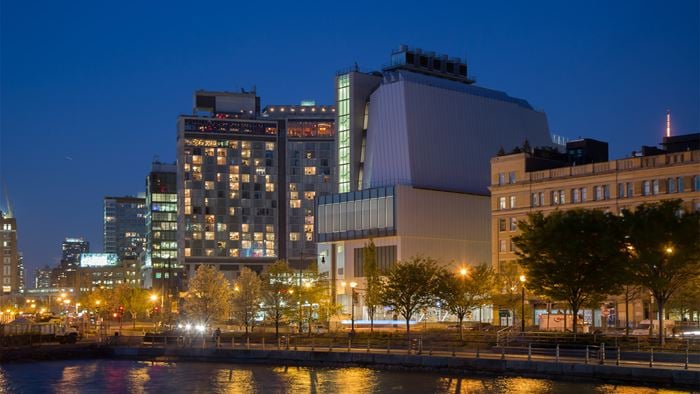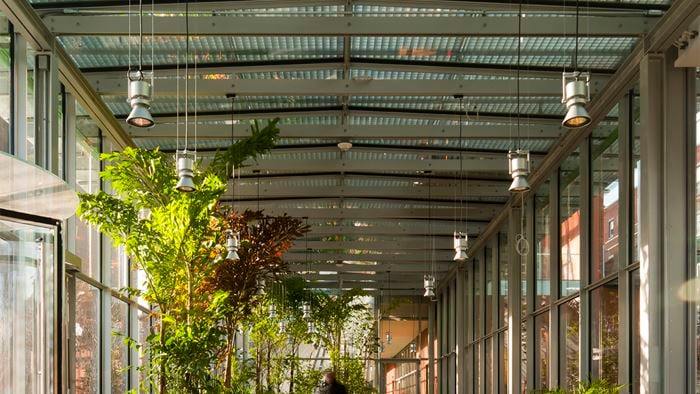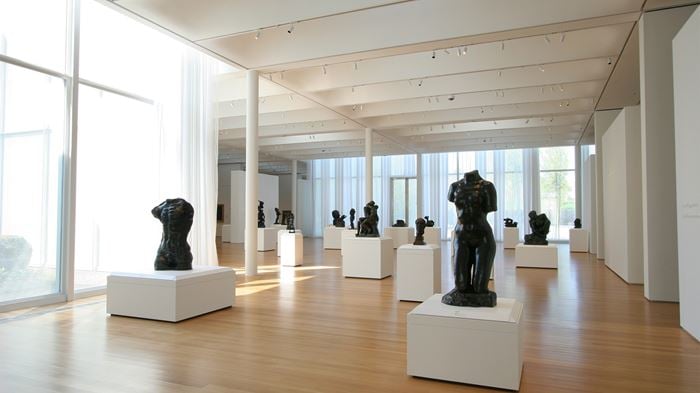Natural lighting is the linchpin of architect Thomas Phifer & Partners’ design concept for the 204,000ft2 expansion of Glenstone, a museum located on 230-acres in Potomac, Maryland. Opened in fall 2018, Phifer’s strikingly minimalist building provides 11 new galleries to showcase Glenstone’s extensive collection of contemporary and modern artwork by artists ranging from Cy Twombly to Pipilotti Rist and Charles Ray.
As the project’s daylighting consultant and architectural lighting designer, Arup worked closely with the architect to create what the American Institute of Architects New York (AIANY) describes as an interplay of “light and shadow [that] varies throughout the day; and as the seasons change . . . revealing subtle qualities in the artworks.” Phifer’s emphasis on natural lighting helped earn Glenstone AIANY’s 2020 Best in Competition award, the chapter’s highest honor.
Project Summary
LEED Gold certified
Exclusive designfor daylight viewing
Best in CompetitionAIA New York, 2020
Making daylighting a fundamental driver of museum design
To help the architects realize their vision, Arup developed a daylighting scheme that incorporates an array of design elements to optimize daylight exposure throughout the year while still allowing shifting lighting conditions to subtly color the viewer’s experience. From the moment visitors enter Glenstone’s skylit entry hall, the quality of light contributes to an atmosphere of serene contemplation. After descending to the gallery level, visitors enter a central passageway with floor-to-ceiling windows offering panoramic views of a richly-planted, interior water court designed by PWP Landscape Architecture. As museum goers weave between the galleries and the central passageway, they repeatedly encounter this lush outdoor landscape, which serves as a counterpoint to the art on display.
Advanced lighting simulation
To optimize daylighting at the museum throughout the year, the Glenstone design team needed a detailed picture of how light levels varied on an hourly, daily and seasonal basis. Arup’s lighting experts ran a simulation of annual exposure levels using a Radiance script developed in-house to precisely capture these changes. This bespoke simulation drew on historic data to recreate light levels at every hour of every day, allowing the team to determine the cumulative exposure with a high degree of accuracy. At the same time, the team built a scale model of the several galleries and conducted in situ lighting measurements for 12 months. The results of both studies were compared to further improve accuracy.
Tailored lighting strategies support aesthetics and conservation
Arup explored a variety of options to enhance daylight exposure that aligned with Phifer’s aesthetic vision. The options varied from flat skylights to vertical skylights to vertical vision glazing solutions. One of the several daylighting approaches Arup employed on the project is a double-layered clerestory monitor that provides even, tempered illumination while allowing the changes in solar environment throughout the year to remain subtly visible. The outer glazing contains a diffusing interlayer that eliminates direct sunlight and UV; the inner glazing has an acid-etch coating that further diffuses the daylight but allows veiled views of the structure behind, connecting the visitor to the architecture.
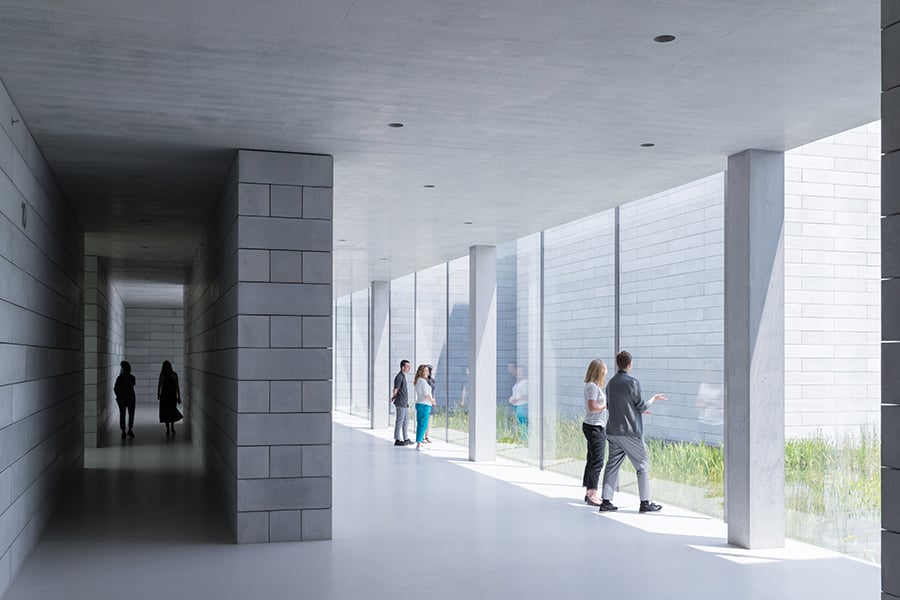
Arup also developed Glenstone’s electric lighting system, which is designed solely for use during nighttime events at the museum and was kept as low-profile as possible. Each gallery is equipped with an ambient light source and the central passage features custom-designed LED downlights recessed in the cast-in-place concrete ceilings. Electric lighting on the grounds surrounding the building was also kept minimal and sensitive to context.
Daylighting delivers a memorable and sustainable museum
By leveraging the subtly changing nature of light to shape the visitor experience, Glenstone breaks new ground in museum design. In addition to providing aesthetic benefits, the prioritization of natural lighting makes Glenstone’s lighting significantly more energy efficient than standard museum lighting schemes, helping to earn the project LEED Gold Certification.
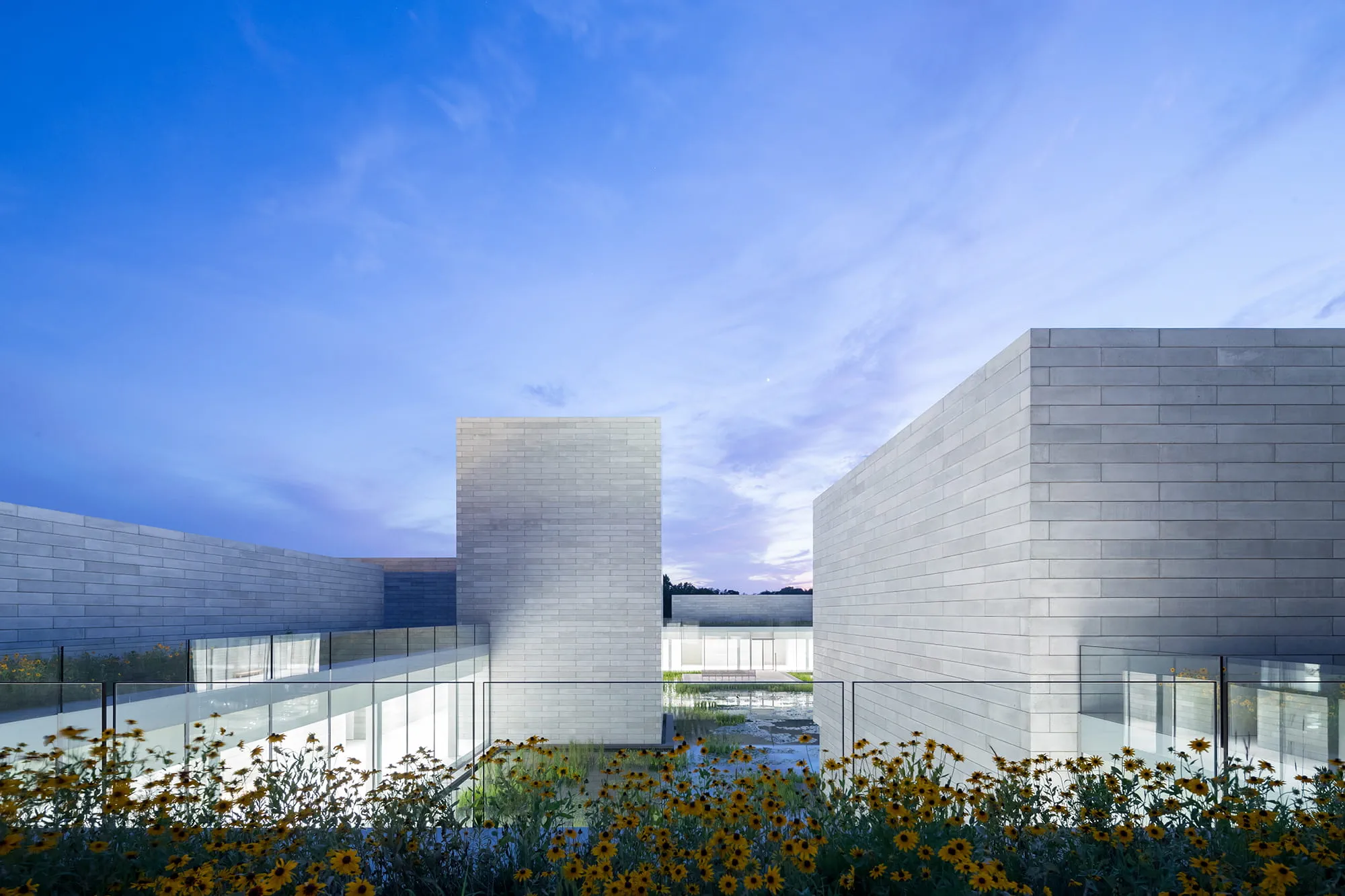 ;
;
